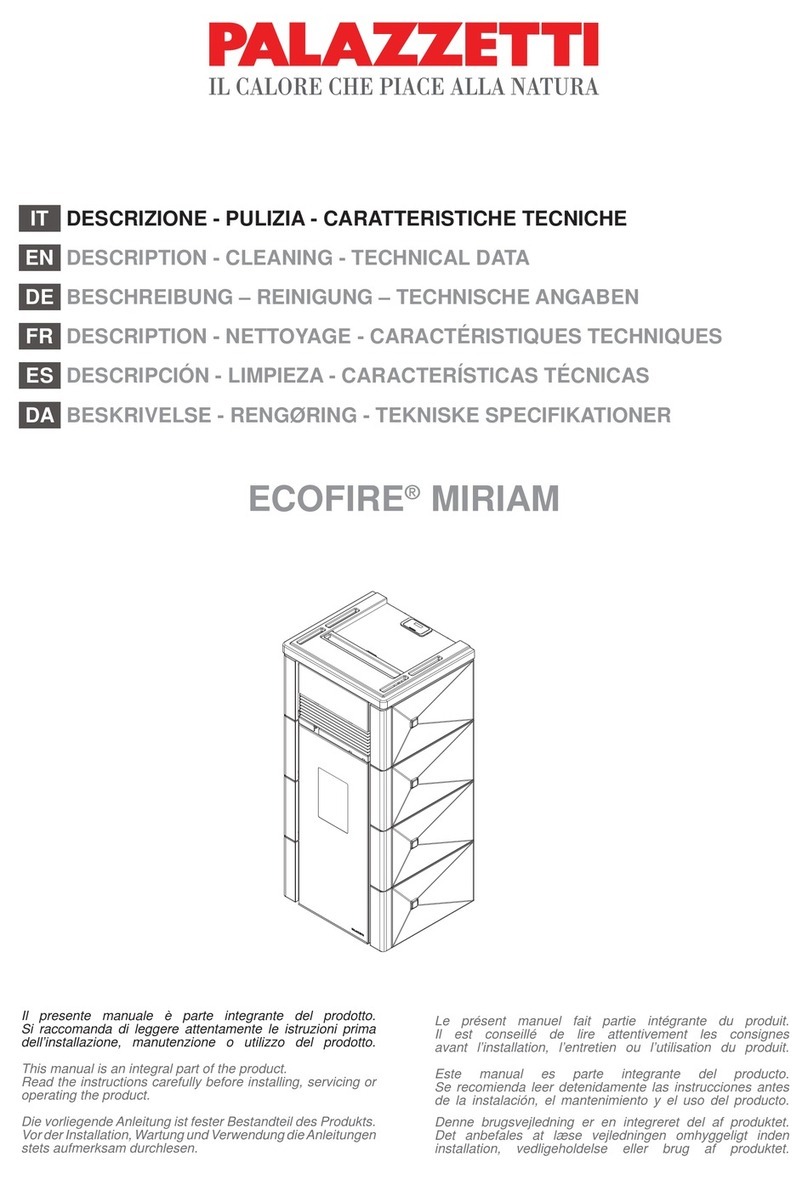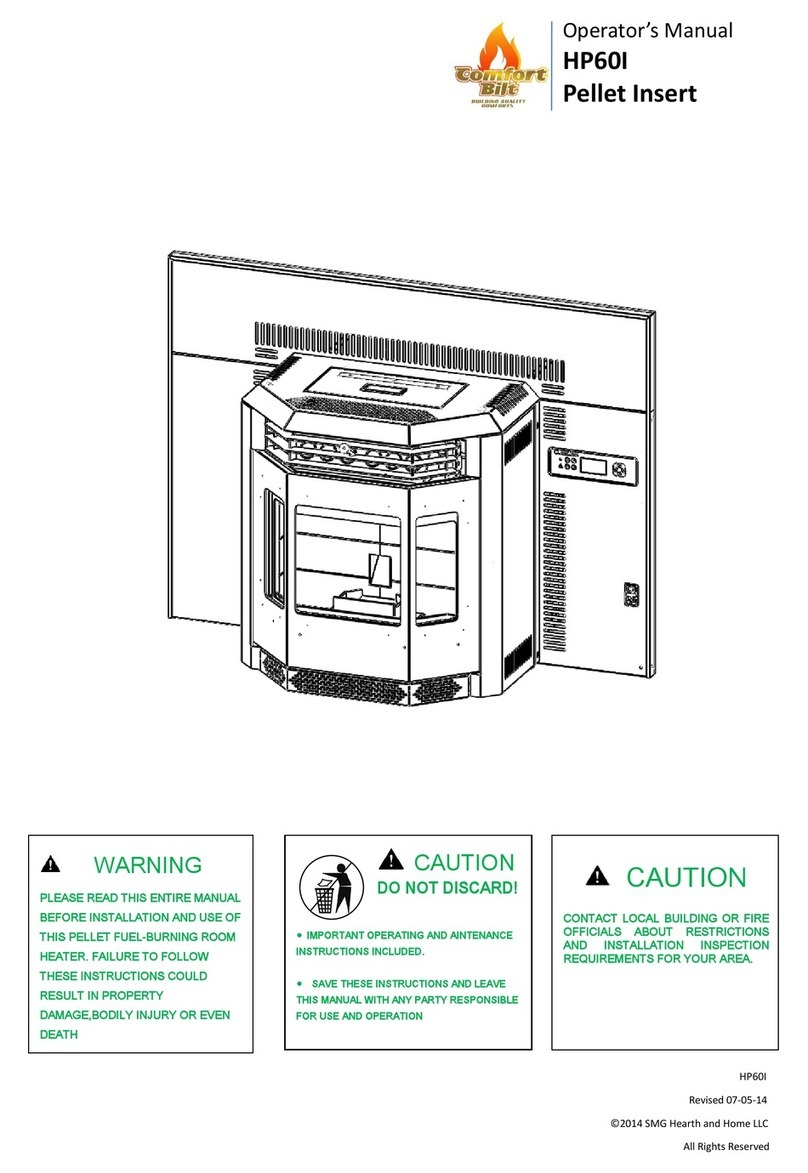
6
All applicable building codes for your location
must be followed. In areas where building codes
require additional steps to the installation of this
product that are not included in this manual, the
building codes will take precedence and must be
followed. Contact your local building inspector to
obtain any necessary permits or inspection
guidelines before installing the product.
Contact local building or fire officials about
restrictions and installation inspection
requirements in your area
Contact your local authority (such as municipal
building department, fire department, fire
prevention bureau, etc.) to determine the need
for a permit
This pellet stove is designed to burn pellet fuel
only
A working smoke detector is required and must
be installed in the same room as the stove.
This stove is not intended for use in
commercial applications
Door and ash pan must be closed and latched
during operation
Notify your insurance company of pellet stove
installation
This installation must conform with local codes.
In the absence of local codes you must comply
with EN 14785.
The structural integrity of the manufactured
home floor, wall, and ceiling/roof must be
maintained.
Keep combustible materials (such as grass,
leaves, etc.) at least three feet away from the
flue outlet on the outside of the building.
This stove should not be used as the only
source of heat in the house. Power outages
and periodic maintenance will result in a total
loss of heat.
Do not leave hopper door open while
unattended.
CAUTION CAUTION
Installation and repair of this pellet stove
should be done by a qualified service person.
The appliance should be inspected before
use and at least once per year by a qualified
service person. It is imperative that the control
compartments, fire box, and circulating air
passageways of the stove are kept clean.
The operation of exhaust fans such as
bathroom fans, attic fans, etc... might starve
the pellet stove of combustible air, creating a
negative pressure in the room. Provide
adequate ventilation of the room the stove is
installed in, otherwise the pressure switch may
shut off operation of the pellet stove.
The moving parts of this stove are propelled
by high torque electric motors. These parts
can cause severe damage to body parts that
get near them. Keep all body parts away from
auger and fans while the stove is plugged into
an electrical outlet. Moving parts are subject
to begin moving while power is supplied.
The venting surfaces can become hot enough
to cause burns if touched. Non combustible
shielding or guards may be required.
Install all venting at the clearances specified
by the vent manufacturer. All venting joints,
whether vertical or horizontal, should be made
gas-tight with recommended sealants
specified by vent manufacturer.
According to HUD (Housing & Urban
Development) requirements, when installing
within a mobile home, this stove must be
grounded directly to the steel chassis of the
mobile home, and bolted to the floor. Direct air
access must be provided by way of a fresh air
intake kit.
For use in the United States and Canada.
Approved for installation in mobile homes.
Producer of this appliance reserves the right to
alter its products, specifications, and/or price
without notice.






























